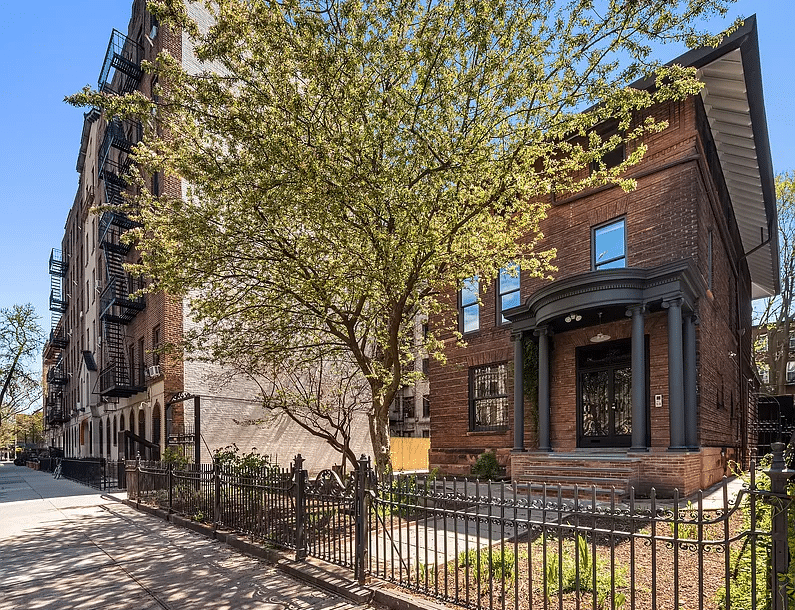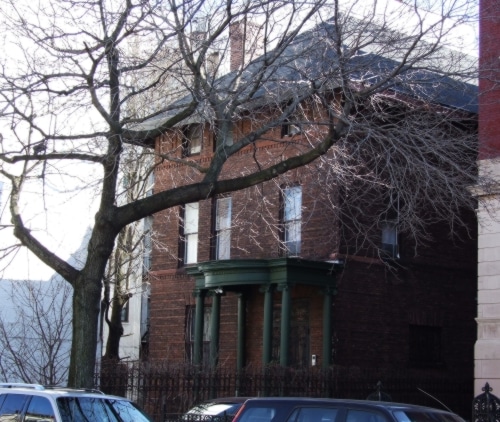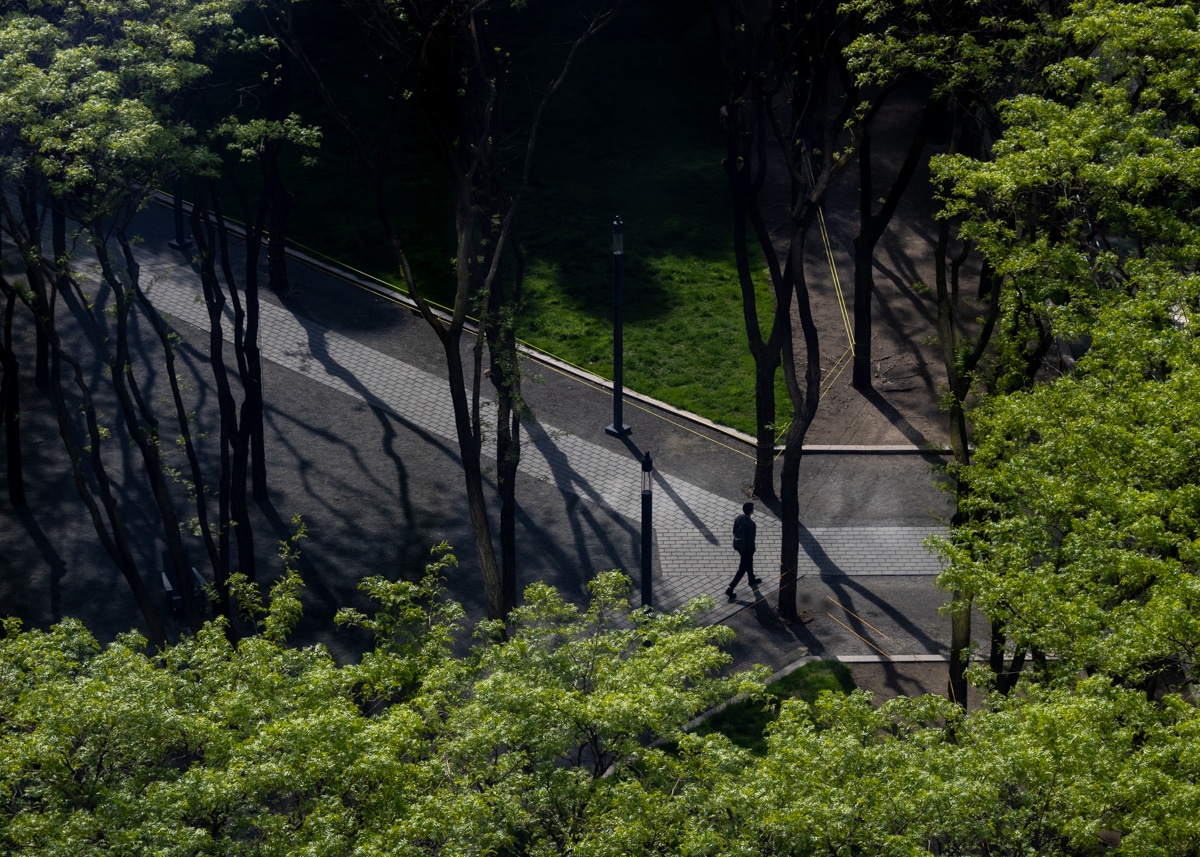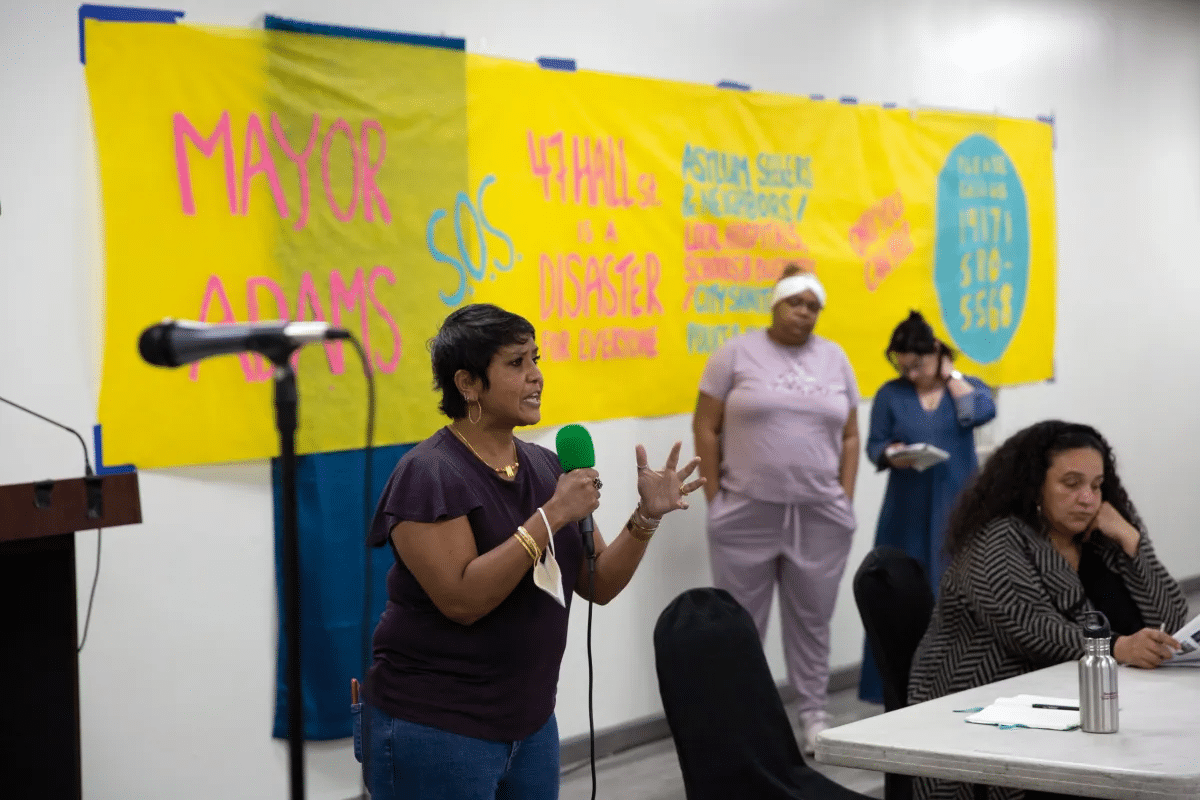Walkabout: NY's Infamous Draft Riots, Part 2
Read Part 1 of this story. New York City in the summer of 1863 was a powder keg looking for a fuse. It found it in the announcement of the Draft, which would conscript soldiers into the Union Army, to fight in the Civil War. The war had been raging for two years already, and…

Read Part 1 of this story.
New York City in the summer of 1863 was a powder keg looking for a fuse. It found it in the announcement of the Draft, which would conscript soldiers into the Union Army, to fight in the Civil War. The war had been raging for two years already, and while thousands of New Yorkers enlisted to fight, and done so with great honor and bravery, the battles had taken their toll. Only weeks before, the greatest and bloodiest battle of the war had taken place in Gettysburg, Pennsylvania, where the fields literally ran red with the blood of the thousands of men from both sides who died, or were wounded.
For many poor Irish and other newcomers to this land, the Civil War was just one more disappointment to be found in this new country. No longer starving in the fields and villages of rural Ireland, many of these immigrants were now living hand to mouth in the slums and tenements of the worst part of Manhattan, an overcrowded cesspool of filth, crime and misery.
One of the few consolations in a city where the native-born and better-off treated them like they weren’t human, was that there was one group poor whites could safely feel superior to: New York’s black population, many of whom were living in similar situations.
In the eyes of the Irish, and other poor whites, the Civil War was the war to free the slaves, something they had no interest in fighting for. It wasn’t just simple racism, although it certainly was that, but it was also survival. The feeding frenzy at the bottom of the economic food chain pitted the black population against the white immigrant population, both groups fighting for menial and unskilled labor jobs.
Free-born blacks, emancipated ex-slaves and runaways all walked the streets of the city, and many employers thought nothing of using them as strike breakers, or lower bidders for jobs that the new immigrants needed as well, or held while demanding higher wages and better conditions. Two groups that could have united to bring about labor reform were united only in hate and fear. The Draft was the last straw.
When the list of conscripts was chosen by lottery the morning of July 13th, Manhattan erupted in riot. Part of that anger was directed at the authorities, and the rich. Homes and businesses were looted and burned, the draft office building was set on fire, and the police and militia were set upon and beaten.
They raided the Mayor’s house, looting it and breaking windows, burned down the Postmaster’s house, and destroyed churches and businesses. By the second day, rioters planned to invade and destroy Wall Street, but that turned out to be the most strongly fortified part of the city. Frustrated, and growing even more out of hand, the rioters turned to the other objects of their anger and hatred: black people.
From the first day of the riots, bands of dock workers and other laborers, mostly Irish, began chasing African-Americans, screaming “Kill all n*gg*rs!” Random black people were attacked and killed, most quite horribly. Whenever any black men tried to defend themselves, the enraged mob usually killed them, usually by lynching, and then burning the corpses.
This happened on several occasions, each more horrific than the last. The mob chased men, women and children down, and attacked any building or institution that catered to or aided African-Americans in any form. They went after bars, boardinghouses, tenements, dance halls, churches, stores, and even orphanages.
On the first day of the riot, the mob attacked the Colored Orphan Asylum on 5th Avenue and 43rd Street, screaming “Burn the n*gg*er’s nest.” The Asylum was seen as a hated example of the rich white establishment’s favoritism towards the Negro, as the home was large, well built, and well stocked with food and provisions for the children, and was in the middle of the city. As the mob of several thousand men and women attacked the building with bats and clubs, the matron and superintendent managed to herd the kids onto the street.
The mob poured into the building, taking blankets, food and other provisions, and then burned the building to the ground. It only took twenty minutes. Miraculously, no one laid a hand on the children, most of who were under twelve. One of the Irishmen in the crowd cried, “”If there is a man among you, with a heart within him come and help these poor children.”
The mob turned on him and tore him to pieces. The staff and children made their way to the nearby police station and stayed there for almost three days, before being ferried to the Almshouse on Blackwell’s Island. Meanwhile on shore, the mobs pushed African-Americans to the docks and into the East and Hudson Rivers, drowning them.
Like the Irishman who tried to save the children, the mob had a special hatred for whites who they felt were sympathetic to black causes. They burned the houses of known abolitionists, and those businesses that took black trade. On the docks, which were a special sore point to the rioters, as many black men were dockworkers, stevedores and porters, gangs of men destroyed taverns and businesses that catered to black workers. Even white prostitutes who accepted black men were singled out, stripped and beaten.
Yet there were also instances of interracial cooperation and bravery. When the mob came after black drug store owner Philip White, his Irish neighbors drove the mob away, because White had always extended them credit in his store. While the mob was busy burning the orphanage, a crying lost black child was wrapped in a blanket by a white man, who carried the child through the crowd like a piece of merchandise, and delivered him to safety.
The police were totally overwhelmed and outnumbered. The militias had been called, but most of the men had been sent to Pennsylvania to deal with the aftermath of Gettysburg, and the Confederate advances towards the state capital. By the time the National Guard was able to get into the city, sent in by the Secretary of War, three days had passed. The soldiers quickly restored order by opening fire on the mobs, killing anyone resisted. Over 6,000 troops patrolled the city, and order was finally re-established.
At the end, eleven black men had been lynched and burned. Many other black men and women were beaten, drowned and otherwise killed, the numbers remain unknown. Over 100 rioters were killed, mostly by the soldiers and police, and over $2.5 million in property damages were assessed. Many policemen and soldiers were also killed. Historians place the total body count in the hundreds, perhaps up to a thousand.
So what happened just across the river in Brooklyn? Not much, actually. The Brooklyn Eagle and other daily papers carried detailed descriptions of the violence, which sent readers to either hide in their cellars of go out and join the rioters, depending on one’s proclivities. But Brooklyn remained pretty quiet. Any who wanted to go over to Manhattan and join in had to be particularly dedicated. This was Brooklyn before any of the bridges were built.
The only way to get to Manhattan was to take the ferry. Among those taking that ferry were the Brooklyn police force and their leader, Inspector John S. Folk. He and his men left their city to aid Manhattan, believing that Brooklyn would remain quiet and safe. He was more or less correct. The only major damage to the city was the burning of two grain storage elevators, an event that seemed to be tied to the riots only by circumstances allowing the perpetrators to be able to get away with it.
Brooklyn’s finest hour came in the rescue and shelter of thousands of African-Americans who fled Manhattan, some to never, ever return. They came to Williamsburg, where they were sheltered and protected by the German immigrant community who put many up in the Turn Verein athletic and social clubs of Williamsburg and Bushwick. Many more made their way to Weeksville, where they were also sheltered and protected.
For a time, Weeksville was also in a state of heightened tension as reports came in, describing a mob of rioters from Jamaica, Queens, who were on their way to Brooklyn to attack. In response, the white citizens of the surrounding area organized to keep order, swearing in extra deputy sheriffs to help protect the community. The mob never came, although they did do some heavy damage in Queens. Blacks fleeing Manhattan also ended up in the very poor shanty town area of Crow Hill, where they sought refuge there, near the site of the Brooklyn Penitentiary.
At the end of the riots, New York City would never be the same again. As in the modern-day aftermath of Hurricane Katrina, the city lost a significant number of black residents, many of whom never returned to Manhattan; many stayed in Brooklyn, others left the state altogether. It would take years for the black population to once again rise in numbers. Positions such as dock workers and stevedores would never again be predominantly filled by black workers; the rioters had succeeded in changing the face of the waterfront workforce for good.
Yet, some great good came of the riots, too. They forced New York’s elite to realize that they couldn’t continue to ignore the conditions of the poor, and an age of social reform was begun. New tenement laws were passed in 1867, aimed at lessening the overcrowding and misery, the first baby steps in a long process of housing reform. Committees were convened into the causes of the riots, and the rich and elite of the city began to concern themselves with charity and charitable organizations.
The great Victorian age of charity would begin here. The riots caused the rise of the Democratic Party as the political representatives of the common working man. The rising Tammany Hall, which had been quite active in inciting the violence, actively sought out Irish and other immigrant groups, signing the men up as voting Democrats. (While also lining their own pockets, of course.)
This would result in over 20 years of Tammany control of city government, and as payback, conditions for the Irish Democrats improved, jobs were created, and the Irish began to move up from the bottom, just in time for new waves of poor Jewish and Italian immigrants to pour in.
For black New Yorkers, things changed as well. The Republican Union League Club championed the uplift of the colored race. Working along with the Committee of Merchants for the Relief of Colored People, they donated funds to help black people find new homes and jobs.
They were the sponsors of the first Negro Regiment from New York, and proudly marched with the black regiment to the docks, as it went to war in 1864. This cemented the Republican commitment to the Negro cause in a powerful and public statement. In Brooklyn, most of the charitable elite were Republicans, and members of Brooklyn’s own Union League Club. The Party of Lincoln for many years was the black man’s friend and ally.
Yet all of this symbolic unity would end with the war, as New York settled back into its familiar ways of business and profit. The races would still compete for jobs, and mistrust, and often hatred, was never irradicated. Millions of new immigrants to our shores would bring even more people to compete for the bottom, but in the meantime, a small, but growing black middle class was quietly rising in towns like Weeksville, as well as in racially mixed enclaves in both Manhattan and Brooklyn.
It was even more possible for African-Americans to become doctors, lawyers, teachers, and other professionals, and have successful businesses, and live where they chosed. The long slow fight for equality was just beginning.
Sources for these articles are: The Brooklyn Daily Eagle, the NY Times, Brookynology, the blog of the Brooklyn Public Library, In the Shadow of Slavery: African Americans in New York City by Leslie M. Harris, “The Cause and Effects of the NY Draft Riots” by Alex Blankfein, and Wikipedia. Illustration of blacks fleeing the mobs from Harper’s Weekly, as seen at press.uchicago.edu.









sometimes this is the way human society moves forward. It is interesting to note that many abolitionists really were not concerned about poor people. Beecher had a real disdain for the poor, probably due to his New England puritan roots that considered poverty a sign of sinfulness and God’s disapproval.